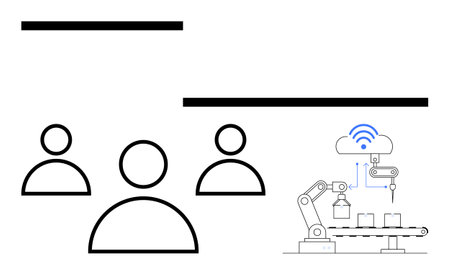Introduction to Voice Disorders
Voice disorders are conditions that affect the quality, pitch, loudness, or flexibility of the voice. In the United States, millions of people experience voice problems at some point in their lives. These issues can make it hard for someone to speak clearly, talk for long periods, or be understood by others.
What Are Voice Disorders?
A voice disorder happens when something goes wrong with the vocal cords or the parts of the body that help us speak. This can lead to a hoarse, weak, or strained-sounding voice. Some people may even lose their voice completely for a short time.
Common Causes of Voice Disorders in the United States
| Cause | Description |
|---|---|
| Overuse or Misuse | Talking loudly, yelling, or singing for long periods (common among teachers, coaches, singers) |
| Vocal Cord Nodules/Polyps | Small growths on the vocal cords from repeated stress or irritation |
| Respiratory Infections | Colds, flu, or allergies causing swelling and irritation in the throat |
| Reflux (GERD) | Stomach acid coming up into the throat and irritating the vocal cords |
| Nerve Problems | Conditions like vocal cord paralysis from surgery, stroke, or neurological diseases |
| Lifestyle Factors | Smoking, drinking alcohol, and dehydration can damage the voice over time |
The Impact on Daily Life and Communication
Voice disorders can have a big effect on daily life. People may find it hard to communicate at work, school, or home. They might avoid social situations because talking is uncomfortable or embarrassing. For many Americans whose jobs depend on their voices—like teachers, customer service workers, or performers—a voice disorder can even affect their livelihood.
2. Assessment and Diagnosis by Speech-Language Pathologists
How SLPs Evaluate Voice Disorders
Speech-Language Pathologists (SLPs) play a key role in the evaluation and diagnosis of voice disorders. Their assessment process is thorough and personalized, making sure each patient’s needs are understood. Here’s how SLPs in the United States typically approach this important step:
Standardized Assessments
SLPs use standardized tests to objectively measure voice quality, pitch, loudness, and other vocal characteristics. These assessments help determine the severity of the voice disorder and guide future treatment plans.
| Assessment Tool | Purpose |
|---|---|
| CAPE-V (Consensus Auditory-Perceptual Evaluation of Voice) | Rates the severity of voice problems based on sound samples |
| VHI (Voice Handicap Index) | Assesses how much a voice disorder impacts daily life |
| Acoustic Analysis | Uses computer software to analyze frequency, intensity, and quality of voice |
Patient Interviews and Case History
Before jumping into tests, SLPs spend time getting to know their patients. Through interviews and detailed case histories, they gather information about symptoms, lifestyle, medical background, and how the voice problem affects daily activities. This helps SLPs understand each unique case from both a clinical and personal perspective.
Typical Questions Asked During an Interview:
- When did you first notice changes in your voice?
- Does your job or hobby require frequent talking or singing?
- Have you experienced any recent illnesses or surgeries?
- Do you smoke or have allergies?
- How does your voice issue affect your work or social life?
Collaboration with ENT Specialists
An essential part of diagnosing voice disorders is working closely with Ear, Nose, and Throat (ENT) doctors, also known as otolaryngologists. ENTs can perform specialized exams like laryngoscopy to look directly at the vocal cords. The partnership between SLPs and ENTs ensures that both medical and functional aspects of the voice are considered.
| Role | Main Responsibilities |
|---|---|
| SLP | Functional assessment, therapy planning, patient education |
| ENT Specialist | Medical diagnosis, surgical interventions if needed, prescribing medication |
This collaborative approach gives patients a comprehensive plan for understanding and managing their voice disorder in a way that suits their needs and lifestyle.

3. Therapeutic Strategies and Evidence-Based Interventions
Voice Therapy Techniques
Speech-Language Pathologists (SLPs) use a range of voice therapy techniques to help individuals with voice disorders. These techniques are designed to improve vocal quality, increase vocal endurance, and reduce strain or injury. Common approaches include:
| Technique | Description |
|---|---|
| Resonant Voice Therapy | Focuses on producing clear sound with the least amount of vocal effort by using easy humming and simple speech tasks. |
| Vocal Function Exercises | A series of systematic exercises aimed at strengthening and balancing the vocal folds, improving overall vocal function. |
| Confidential Voice Therapy | Encourages speaking softly and gently to reduce stress on the vocal cords, especially helpful during recovery from injury. |
| Circumlaryngeal Massage | Manual therapy that targets muscle tension around the larynx to help relax tight muscles and improve voice quality. |
Vocal Hygiene Education
SLPs emphasize the importance of vocal hygiene as a key part of managing voice disorders. Vocal hygiene education helps clients understand how daily habits affect their voice and what changes can support vocal health. Some practical tips include:
- Hydration: Drink plenty of water throughout the day to keep the vocal cords moist.
- Avoiding Irritants: Limit or avoid smoking, caffeine, and alcohol as they can dry out or irritate the throat.
- Resting the Voice: Take breaks from talking or singing, especially when feeling hoarse or tired.
- Managing Allergies: Treat allergies promptly to reduce throat clearing and coughing.
- Using Amplification: Use a microphone or speaker system in noisy settings to avoid shouting.
Individualized Therapy Plans
No two voices are exactly alike, so SLPs create individualized therapy plans tailored to each persons needs. A typical plan may include:
| Component | Purpose | Example Activities |
|---|---|---|
| Assessment Goals | Identify specific voice issues and set measurable goals for improvement. | Baseline recordings, symptom tracking, goal-setting sessions. |
| Treatment Techniques | Select evidence-based interventions based on assessment findings. | Resonant voice exercises, breathing training, posture correction. |
| Progress Monitoring | Track changes in voice quality and adjust strategies as needed. | Regular check-ins, client feedback, updated recordings. |
| Home Practice Guidelines | Empower clients to practice skills outside therapy sessions for better results. | Daily warm-up routines, hydration reminders, self-monitoring logs. |
The SLP-Client Partnership
The partnership between SLPs and clients is essential for successful outcomes. SLPs provide guidance, encouragement, and expert knowledge while clients play an active role by practicing recommended strategies at home and providing feedback about their progress. This collaborative approach ensures that therapy remains relevant and effective for each individual’s unique lifestyle and needs.
4. Patient-Centered Care and Cultural Considerations
Speech-language pathologists (SLPs) play an essential role in supporting people with voice disorders across the United States. Their approach is grounded in patient-centered care, which means therapy is tailored to meet each person’s unique needs, background, and goals. Because the U.S. is home to a diverse population, SLPs must also be culturally competent and sensitive to different lifestyles, languages, and vocal demands.
Emphasis on Client-Specific Therapy Goals
Every person’s voice disorder experience is unique, so SLPs work closely with clients to create individualized therapy plans. These plans consider not just the medical aspects of a voice disorder but also personal goals related to work, family life, social activities, and cultural traditions.
Examples of Client-Specific Goals
| Client Background | Possible Therapy Goals |
|---|---|
| Teacher or Public Speaker | Improve vocal stamina for daily speaking demands |
| Bilingual Individual | Enhance voice use in both primary languages |
| Singer or Performer | Restore singing range and vocal quality for performances |
| Older Adult | Strengthen vocal clarity for better communication with family and caregivers |
| Youth Athlete (e.g., cheerleader) | Reduce hoarseness after games and practices |
Culturally Competent Care
The U.S. population comes from many cultural backgrounds, so SLPs are trained to understand how culture, language, and beliefs may affect voice use and treatment preferences. For example, some cultures have specific vocal traditions or expectations about speaking roles in public or at home. SLPs respect these differences and adjust their care plans accordingly.
Cultural Factors in Voice Therapy
- Language Use: Therapy may address challenges in more than one language.
- Cultural Norms: Some people may use louder or softer voices based on tradition.
- Family Involvement: In some communities, including family in therapy is important for success.
- Health Beliefs: Different beliefs about illness or disability can shape therapy approaches.
Addressing Diverse Vocal Demands Common in the U.S.
The United States has a wide range of professions and lifestyles that require special attention to vocal health. SLPs often work with individuals whose jobs depend on healthy voices—such as teachers, call center employees, singers, actors, clergy members, and sports coaches. They also help people who use their voices differently at home or within their communities.
Common Populations Served by SLPs for Voice Disorders in the U.S.
- K-12 Teachers and Educators
- Bilingual or Multilingual Speakers
- Singers and Actors (including community theater participants)
- Aging Adults experiencing age-related vocal changes
- LGBTQ+ Individuals seeking gender-affirming voice care
- Youth Athletes (cheerleaders, coaches)
- People with high-stress jobs requiring frequent speaking (customer service representatives)
By focusing on client-specific goals and understanding cultural differences, speech-language pathologists provide meaningful support that helps people find their best voice—no matter their background or profession.
5. Collaboration and Advocacy in the Community
Speech-Language Pathologists (SLPs) play a vital role not just with their clients, but also within the larger American community. Their work extends far beyond the clinic or hospital setting, reaching into schools, workplaces, and public health initiatives. SLPs act as both collaborators and advocates, helping to ensure that people with voice disorders receive the support they need while promoting awareness and prevention for everyone.
The Role of SLPs in Schools and Workplaces
SLPs often partner with teachers and school staff to identify students who might be struggling with voice issues. Early detection is key, especially for kids who use their voices a lot, such as those involved in theater or choir. SLPs provide training to teachers on healthy voice habits and help set up classroom environments that reduce vocal strain.
In the workplace, SLPs may work with employers to accommodate employees with voice disorders. They recommend practical strategies—like using amplification devices during presentations or adjusting job duties temporarily—to support employees’ vocal health. This collaboration ensures that employees can continue working productively without risking further damage to their voices.
Examples of SLP Collaboration
| Setting | SLP Collaboration Example |
|---|---|
| School | Training teachers to recognize early signs of voice problems in students |
| Workplace | Advising employers on voice-friendly policies and equipment for staff meetings |
| Healthcare | Working alongside doctors and nurses to develop holistic treatment plans for patients with voice disorders |
Promoting Awareness in American Communities
Another essential part of an SLP’s role is advocacy—spreading awareness about voice disorders and teaching prevention strategies. SLPs might organize workshops at community centers, visit local businesses, or participate in health fairs. These events cover topics like how to avoid vocal misuse, what early warning signs to look for, and when to seek professional help.
Common Prevention Tips Shared by SLPs
- Stay hydrated by drinking plenty of water throughout the day.
- Avoid yelling or whispering for long periods.
- Rest your voice when you feel hoarse or tired.
- Use proper breathing techniques when speaking or singing.
- Seek professional advice if you notice persistent changes in your voice.
The Impact of Community Advocacy
Through collaboration and advocacy, SLPs help create supportive environments where people with voice disorders can thrive. By working closely with educators, employers, healthcare providers, and the public, they are making a real difference in American communities—one voice at a time.

